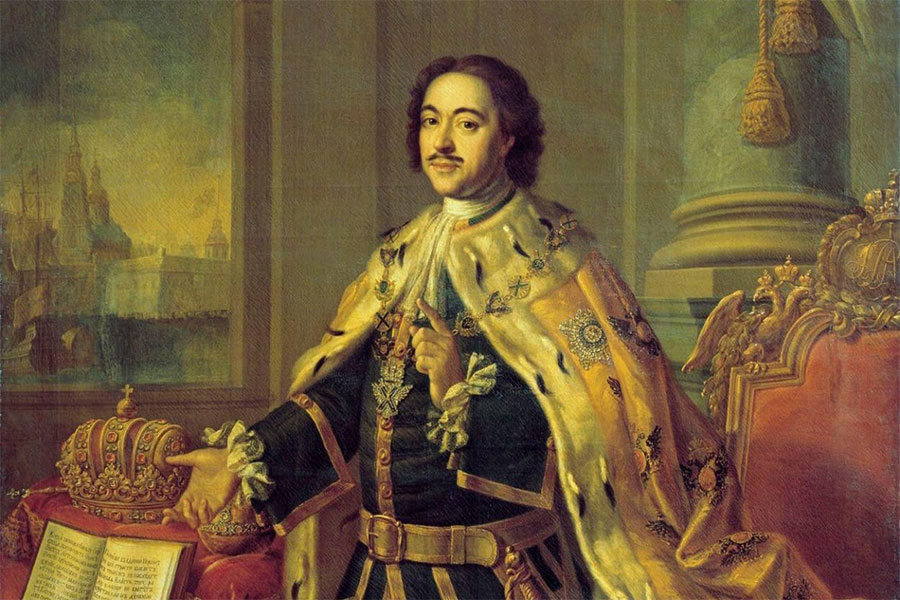The tsar who made Russia a part of Europe: Who is Peter the Great?
He forbade growing a beard because he wanted a European appearance; He made it obligatory for those who wanted to grow their beards to pay a beard tax.

During his reign from 1682 to 1725, Peter the Great ruled his nation with the desire to become a great power. King of France XIV. Louis then ruled the country as an absolute king, taking him as his model. Its capital is St. Petersburg, he had his glamorous palace built with the intention of overshadowing the palace of Versailles.
Just before Peter's accession to the throne, Russia was neither fully European nor fully Asian. The Russians were Christians. But larger than all the European countries combined, their growing countries bordered on the ancient Asian empires of China and Persia. Most of Russia was part of the former Mongol Empire.
Peter I (9 June 1672 – 8 February 1725), most commonly known as Peter the Great, was a Russian monarch who ruled the Tsardom of Russia from 7 May 1682 to 1721 and subsequently the Russian Empire until his death in 1725, jointly ruling with his elder half-brother, Ivan V until 1696. He is primarily credited with the modernisation of the country, transforming it into a European power.
Peter the Great turned Russia's face straight to the European camp. He moved the Russian capital from Moscow to Petersburg, a city he founded on the Baltic Coast. He sought to establish closer ties with European countries, adopted European traditions in clothing, and was the first Russian leader to visit the West. Peter reorganized the Russian army and government to copy European standards.
The tsar was personally cruel, angry, and a heavy drinker. In 1698, an English traveler spoke of him as "the desire to judge, by the variability of his temperament, was very frequent in him." Petro was also gigantic, with a height of more than 2 meters in size.
In the two centuries after Peter's death in 1725, the Russian Empire became a major European power. But the dictatorship of the tsars and the existence of landed slavery, which was not abandoned in Russia until 1861, hindered the development of a strong Russian middle class. Peter's heirs ruled Russia until the revolution in 1917.
Additional Information About Peter the Great:
To prevent beards, he imposed a tax of 100 rubles on the nobles and a kopeck on the common people.
After the communist revolution in 1917, the Russian capital was moved to its former location, Moscow. st. Petersburg was renamed Leningrad in honor of Vladimir Lenin, but after the collapse of the Soviet Union in 1991 the name was restored.
The palace built by Peter, St. Petersburg is the current Hermitage museum, one of the largest art museums in the world.
Shortly after he became tsar, he went on a tour of Europe, where he disguised and learned how to make many observations, work in shipyards, and ship. During this trip, he would get drunk in the places where he stayed and damage and break everything.
He forbade growing a beard because he wanted a European appearance, and made it obligatory for those who wanted to grow a beard to pay a beard tax.
He established a museum called “Kunstkamera” and in this museum, it is possible to see the skeletons of conjoined, double-headed fetuses with disabilities or animals with similar disabilities stored in jars.
He had an interest in dwarves, giants, and generally anything that looked different, as we can tell from the things he collected.
He used to bring a giant man from France and take him with him all the time, and when this person died, he kept his skeleton and put it in the museum.
Because he did not like Moscow and wanted a more European capital, he planned a city from scratch.
Inspired by Amsterdam, he built this city on the edge of a delta and wanted it to be decorated with canals. As a result, Petersburg was built on a swamp. Since there was a shortage of stones during the construction of St. Petersburg, he stopped all the stone constructions in Russia and had all these stones used in the construction of Petersburg.
During the war with Sweden, when iron was not enough to produce more cannons and rifles, he focused all of Russia's iron resources on it...
Peter the Great began to have problems with his urinary tract and bladder in the winter of 1723. In 1724, he underwent major bladder and kidney surgery. He contracted uremia in January 1725. It is said that Peter asked for a pen and paper before he died. In a final effort, he scribbled an unfinished note, "Leave it all now...". He died on the morning of February 8, 1725. He was buried in the Peter and Paul Cathedral. His autopsy revealed that he had gangrene in his bladder.
